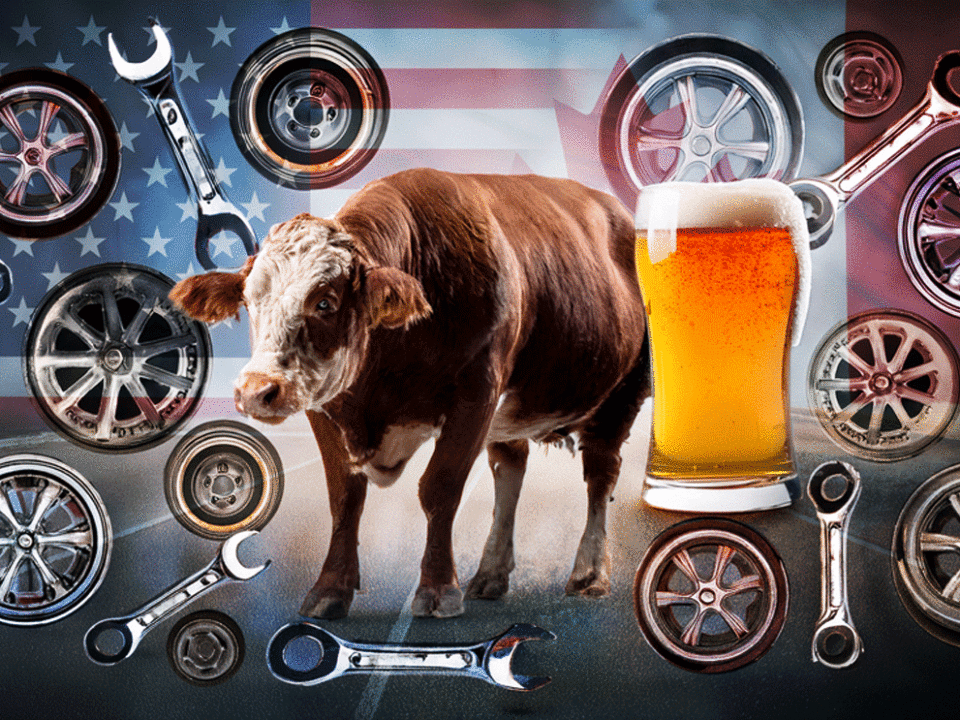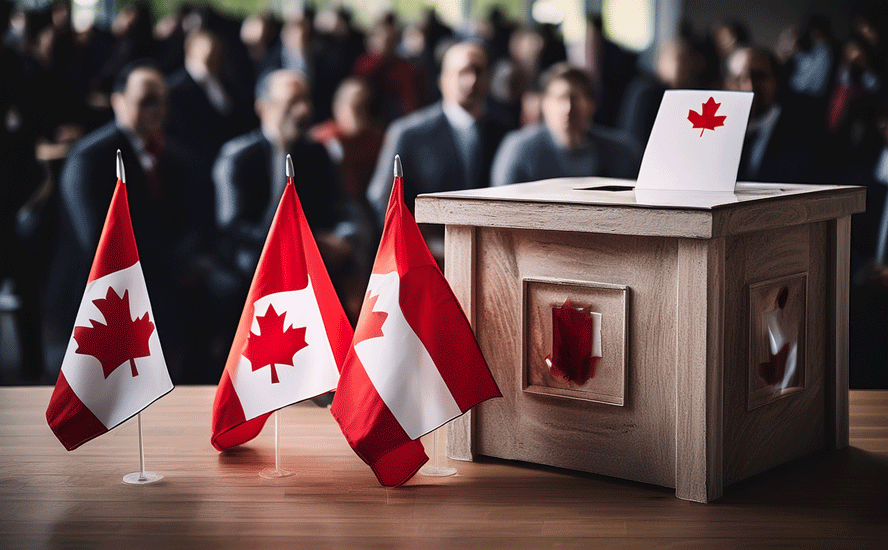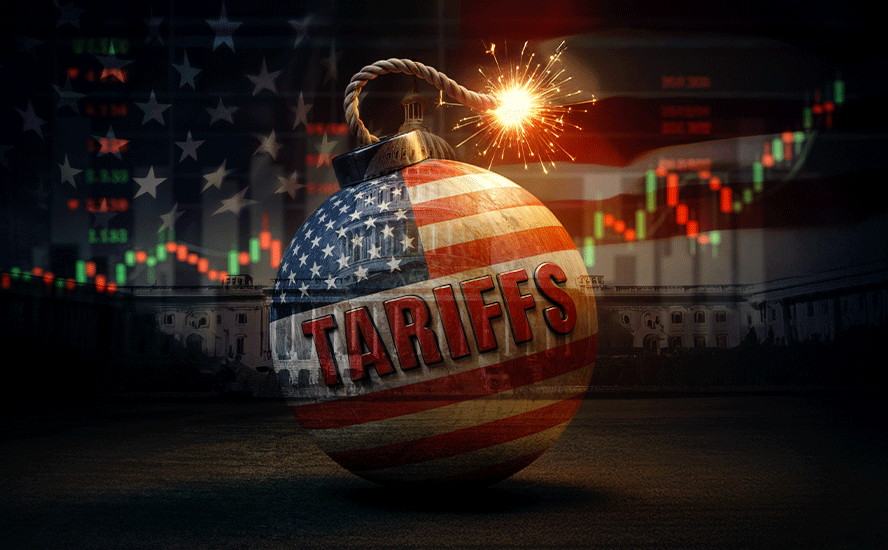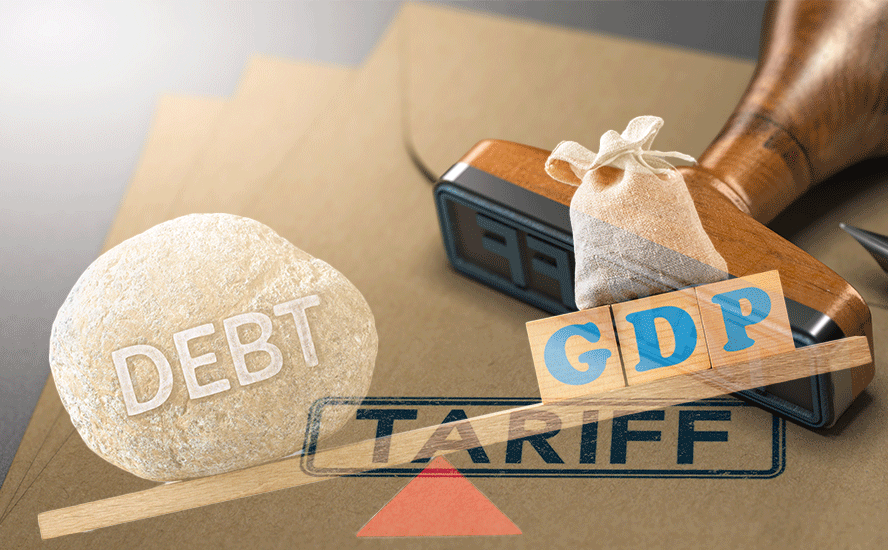How a ‘Debt Jubilee’ + mining could be a path to coronavirus recovery

2020.03.17
Stock markets rebounded on Tuesday, after the White House announced further measures to help Americans and companies hurt by the coronavirus pandemic.
The Trump Administration is reportedly considering sending checks to Americans so they have cash to spend during the outbreak.
The Dow, S&P 500 and the Nasdaq finishing about 6% higher was a welcome respite from Monday’s market carnage. The Dow Jones Industrial Average posted its worst sell-off since Black Monday of 1987, on data showing the coronavirus has caused an unprecedented economic collapse in China (the Q1 numbers will be ugly, however, we also note that China has succeeded in containing the virus and is already moving on to re-building its battered economy. Read Virus won’t keep copper down for long)
There are currently over 5,000 cases of covid-19 in the United States, more than triple the 1,300 infections reported on Friday. Canada has 446 confirmed cases and five deaths, including four in BC and one in Ontario. Worldwide, the pandemic has claimed nearly 8,000 lives and is closing in on 200,000 people infected.
Draconian measures to restrict personal movement and the freedom to assemble are being taken. Italy, France, Spain, Denmark, the Netherlands and Ireland have enacted country-wide lockdowns.
Major US cities have followed, shutting down schools, bars and theaters to prevent the flu-like virus from spreading. All public buildings in New York, Los Angeles and Washington State have been shut temporarily.
From outside his home in Ottawa, where he is “self-isolating” due to his wife contracting the disease, Prime Minister Justin Trudeau on Monday said Canada is closing its borders to foreign travelers. The federal government has already imposed restrictions on international travel.
Fall-out containment
Meanwhile finance officials and central bankers around the world have been taking extraordinary steps to contain the economic fallout from covid-19.
In a surprise move, considering it already slashed interest rates by 50 basis points earlier this month, on Sunday the US Federal Reserve announced it will cut interest rates to 0%, and buy hundreds of billions worth of bonds, to try and shelter the US economy from the worsening effects of the coronavirus/ covid-19.
Politico reported the Fed will increase its holdings of US Treasuries and mortgage-backed securities by up to $700 billion. The central bank said last week it will intervene in short-term funding markets to the tune of $1.5 trillion.
The US government on Saturday passed an aid package for workers. On Monday the US Senate took up the House-passed coronavirus relief bill, and is reportedly already discussing a second round of stimulus.
The first piece of legislation includes a $50 billion expansion in loan capacity for small businesses, and a reduction in payroll taxes to 2%.
On Friday the Bank of Canada made an emergency 50-basis-point cut to its overnight interest rate, lowering it to 0.75%. The Trudeau government has also boosted credit for small businesses to C$10 billion, added over $300 billion in lending capacity for major banks, and promised a major stimulus package that includes direct support to individuals, and $1 billion for provincial health care systems.
Last week the UK Chancellor in his first budget announced a £12 billion emergency fiscal stimulus to counter the shock of the coronavirus outbreak, and the European Union unveiled emergency measures, including flexibility regarding rules on budgets and state aid, and a 37-billion-euro fund for coronavirus support.
Other interventions include: the People’s Bank of China releasing $79 billion worth of liquidity Friday, and on Monday, offering $14 billion in loans to banks; the Bank of Japan planning to buy $1.9 billion in overnight bonds, the Reserve Bank of Australia poised to buy government bonds, and Italy spending up to 16 billion euros on a stimulus package.
Spending dries up
Will all this stimulus be enough to head off financial catastrophe?
Notice all of these measures are aimed at encouraging spending by lowering interest rates, and getting banks to make more loans. The International Monetary Fund is all-in, too, on Monday publishing a set of policy recommendations to stressed countries, involving, “fiscal and monetary policy” – code for borrow more, spend more. The IMF is generously offering its $1 trillion lending capacity to put member nations even further into debt: As a first line of defense, the Fund can deploy its flexible and rapid-disbursing emergency response toolkit to help countries with urgent balance-of-payment needs.
Lower interest rates and massive asset purchases by central banks are the monetary tools of choice when it comes to restoring shocked financial systems. The idea being that making the cost of borrowing cheap for individuals and businesses will entice them to spend, spend, spend. It’s no wonder this is the panacea for floundering markets. In the US, consumer spending makes up 70% of Gross Domestic Product; in Canada it’s 65%.
In our last article we asked, “How can the usual stimulus response of low interest rates and money-printing work, in economies where unemployment might hit +20% and quarantined citizens are too scared to go out and spend? Could the lack of spending lead to deflation? Even a recession?”
The answer to the first question is it can’t, and to the second is, it’s looking more and more likely. Why? Because the current virus-induced financial shock is entirely different from the 2008 financial crisis. As we showed in our last article, consumer spending, the engine of the economy, is falling off a cliff.
We see it happening as early as September, 2019, when US retail sales fell for first time in seven months, as households slashed spending on building materials, online purchases, and especially cars, CNBC reported.
Three months later, sales at clothing stores declined the most since January 2009. We see confidence among US shoppers beginning to wane around December. That month, the Conference Board released a report stating that an index measuring consumer’s short-term outlook for income, business and labor conditions, fell from 100.3 to 97.4.
“While the economy hasn’t shown signs of further weakening, there is little to suggest that growth, and in particular consumer spending, will gain momentum in early 2020,” Lynn Franco, the Conference Board’s director of economic indicators, said in a press release.
There were other warnings, too. Business Insider reminds us of two reports in October, one from UBS that found consumers were struggling to cover expenses, and another from Bank of America Merrill Lynch stating that spending faced stronger headwinds than tailwinds.
The coronavirus has, understandably, deepened consumers’ fear of racking up any significant new purchases, like a new car, house, appliances or vacation. As The Hill reported, the Morning Consult consumer sentiment index is down 3.2% since the start of the year, with much of the decrease corresponding with the spread of the coronavirus in late February.
When times are good, businesses are booming, cranking out products whose prices, over time, gradually rise. With an economy close to full employment, consumers don’t mind paying a little more for goods and services, since their jobs and incomes feel safe. This is a normal, healthy fiat inflationary environment.
Unfortunately, that is not what we are currently seeing. Instead of going out and spending their hard-earned shekels, many Americans are plowing it into savings accounts, or investing it, or stuffing it under the mattress.
One would have expected people to save more during the Great Recession, and that is precisely what happened. According to the Wall Street Journal, the personal savings rate rose from 3.7% in 2007 to 6.5% in 2010, the year the recession ended.
The recovery from the recession should have seen the personal savings rate fall, as consumers gained more confidence in the economy. Instead, the savings rate kept climbing, to an average 8.2% in the first seven months of 2019 – higher than the average for any full year since 2012, WSJ notes.
Possible causes of higher US saving behaviour include aging baby boomers preparing for retirement, a more cautious buying public scared by the Great Recession, and the widening gap between the rich who save a lot and the poor who save very little.
Whatever the reasons for consumers preferring saving over spending, it can’t be good for the economy. The coronavirus is making it 10 times worse.
Quarantines, cancellations, business shutdowns, job losses and fear are growing. Consumers are stocking up on supplies best they can and holing up. Consumer spending isn’t coming back any time soon. Relief efforts and monetary stimulus efforts will fail this time around.
Debt – a brake on demand
Up to now, the chosen policy prescription for all financial ills has been, throw more money at the problem, even it means piling up the debt. This works when economies are growing, but not in the current low- to no-growth environment.
Before the coronavirus crisis, renowned economist David Rosenberg identified the connection between exploding global debt – which surged from US$116 trillion at the 2007 credit bubble high to a current US$244 trillion – and the risk of deflation, which means prices are falling, across the entire economy.
Since early 2019, central banks have been lowering interest rates to fight deflation – seen as the number one threat to global economic stability. The Federal Reserve chopped interest rates three times during 2019. Germany’s Bundesbank cut rates so low, its “bund” yields fell below 0%. Other banks did the same, so that at one point last year, there was $17 trillion in negative-yielding debt.
As Rosenberg sees it, all of this excess debt has become a brake on aggregate demand. Consider: over the last 13 years, debt has increased by $128 trillion, but GDP has only risen by $27 trillion. Ie. countries borrowed five times more than their economies managed to produce.
In November, total US debt surpassed $23 trillion for the first time, with just under $17 trillion held by the public and $6 trillion in government loans.
Rising interest rates compound the problem. In 2008 interest on the national debt was $253 billion and consumed 8.5% of the federal budget. By 2026 the interest is projected to be $762 billion and take up 12.9% of the budget. This is approaching the US Military’s current budget of $989 billion, which is the second largest line item in the budget, behind only Social Security.
The growing debt burden is not just a US phenomenon; it’s global.
Finland, Canada and Japan saw the largest increase in debt-to-GDP ratios of all the countries tracked in a one-year period. The IIF study is alarming because high levels of debt puts countries in a vulnerable position in the event of a downturn, Axios reported.
According to the World Bank, countries whose debt-to-GDP ratios are above 77% for long periods experience significant slowdowns in economic growth. Every percentage point above 77% knocks 1.7% off GDP, according to the study, via Investopedia. The United States’ current debt-to-GDP ratio is 106.5%.
And it’s not only governments. Almost 19 trillion dollars of debt is owed by companies that don’t earn enough to cover interest payments. A recent analysis by the UN Conference on Trade and Development found that in 2018, total debt across developing countries amounted to over twice their combined GDP – the highest it’s ever been. Nearly three-quarters of that debt is held by non-financial corporations and owed to external creditors in foreign currencies.
This can’t go on forever. It’s not a stretch to envision a scenario whereby the world’s reserve currency, the US dollar, collapses under the weight of unmanageable debt, triggered say, by a mass offloading of US Treasuries by foreign countries, that currently own about $6 trillion of US debt. This would cause the dollar to crash, and interest rates would go through the roof, choking consumer and business borrowing. Import prices would skyrocket too, the result of a low dollar, hitting consumers in the pocket-book for everything not made in the USA. Business confidence would plummet, mass layoffs would occur, growth would stop, and the US would enter a recession.
All the countries that sold their Treasuries would then face a major slump in demand for their products from American consumers, their largest market. Eventually companies in these countries would begin to suffer, plus all other nations that trade with the US, like Canada and Mexico. Before long the recession in the US would spread like a cancer, to the rest of the world.
Read more at The Coming Great Global Reset
Apocalyptic visions like these have pundits offering outside-the-box solutions. According to Rosenberg, and others, the only policy prescription is debt default.
Debt default? Yes, you read that right.
Debt Jubilee
The global debt overhang which as stated, has more than doubled since 2007, has severely curtailed governments’ ability to deal with a major financial crisis such as the coronavirus. Interest rates are already so low, that central banks are limited in how much they can cut (the Fed has already “used up all its bullets” in setting interest rates at zero), and how much of a difference this will make to citizens and businesses that are basically in lockdown mode.
AT AOTH we propose a three-part solution. We believe the only way out is a “Debt Jubilee” that retires all of the massive accumulation of global debt. The second part, giving cash directly to the now-debt-free consumer, is a good way to stimulate the North American economy, since two-thirds of the US and Canadian economies is consumer spending. The third aspect of our plan is a global infrastructure program that would put thousands of people to work, and fire up global GDP in a way possibly unseen since President Roosevelt’s New Deal.
Our plan might sound radical, but a reading of history shows that retiring debt can actually make a country’s economy, and its indebted citizenry, all the better for it. There is even a relatively recent example. In 2000, U2 front man Bono launched a campaign to provide debt relief to developing countries. The Jubilee 2000 coalition managed to get the G8 to agree to write off $100 billion in debts that developing countries owed to developed nations.
The term ‘Jubilee’ comes from the Old Testament. The book of Deuteronomy refers to a sabbath year during which any slaves would be freed, and everyone would be allowed to return to their family farms and live off the land. During the Jubilee, all debt obligations would be forgiven – such as land or crops that debtors had pledged to creditors.
In those days, the main creditors were royal families and their close supporters – religious orders and wealthy nobles. Thus, canceling debts really only meant snuffing out debts owed to themselves. As explained by Vox, What the king lost in immediate payment, he got back in encouraging a land holding peasantry, who could pay future taxes and provide the backbone of the army. Moreover, rivals to the Crown, foreign enemies or internal upstarts, could foment rebellion by threatening to cancel debts themselves, if the new Monarch did not do so first.
The Conversation explains how this ancient practice could work – and it is especially relevant to the crisis the world is currently facing:
The main economic justification for a modern debt jubilee is simple. With debts forgiven, governments, households and individuals could spend the money currently devoted to interest and principal repayments on consumption which would, in turn, increase economic demand and encourage economic growth, and eventually take the world economy out of constant crisis.
Billionaire investor and hedge fund manager Ray Dalio, in his book ‘Principles for Navigating Big Debt Crises’, argues that when interest rates can’t go any lower and QE has already been tried (ie. right now), a central bank’s last resort is to provide relief for the common people.
Incredibly, we have already reached this point. Remember, as stated at the top, the White House is currently looking at sending checks to Americans so they have cash to spend during the coronavirus outbreak. This is the last resort.
Central bank stimulus, to deal with the covid-19 crisis, should involve buying/ forgiving student loans, delinquent car loans, personal lines of credit, credit card debt and mortgages.
A Seeking Alpha contribution titled ‘The Year of the American Jubilee Is Coming’, states there are already calls for the Secretary of Education to increase student loan debt forgiveness.
Canadian students leaving university owe an average $28,000; it’s not uncommon for law or medical students to carry a debt load into their first job surpassing $100,000. Student loan debt is a major inhibitor to college/ university grads being able to obtain a mortgage.
During the financial crisis, the Obama administration tried bringing in mortgage forgiveness, but was unable to get it through Congress. Ironic that in 2008 the Federal Reserve printed $4 trillion to buy up the banks’ bad debt, while Congress watched, allowed, 10 million American homeowners to be foreclosed.
Canadian families are carrying $1.6 trillion in mortgage borrowing, plus $400 billion in home equity lines of credit (HELOC). Then there’s reverse mortgages, another $600 billion in credit card and consumer loan debt, writes Garth Turner, former Conservative politician, in his popular real estate blog, Greater Fool:
It’s everywhere. You know the numbers. Four in ten people have less than $200 a month after servicing their debts and buying yogurt and street cannabis. The debt-to-income ratio has never been higher. Borrowing is running four times hotter than inflation. Even when house values go down, mortgage debt goes up. It’s hopeless. Addicted. We’re pickled in the stuff.
An outright cancelation of sovereign debt shouldn’t be ruled out. During the Great Depression, France and Greece had about half of their national debts written off completely. In 1953, the London Debt Agreement between Germany and 20 creditors wrote off 46% of its pre-war debt and 52% of its post-war debt. The country only had to repay debt if it ran a trade surplus, thus encouraging Germany’s creditors to invest in its exports, which fueled its post-war boom. As we pointed out, in 2000, $100 billion worth of debts owed by developing countries were wiped off the books.
Again, this is not as far-fetched as it sounds. Because we live in a fiat monetary system, currencies are not backed by anything physical; the reserve currency, the US dollar, was de-coupled from the gold standard in the early 1970s. It’s not like a raid on vaults full of gold, which have an inherent, physical store of value.
In reality there is nothing preventing central bankers from doing a complete global reset, putting all debt back to zero.
The benefits of a Debt Jubilee would accrue to governments, no longer bound to austerity programs, taxpayers, who would benefit from increased social spending, as well as students, homeowners, and your average Joe and Jill Sixpack.
Garth Turner argues that erasing people’s debt is the same as cutting their taxes, the effect being the same – a marked increase in spending:
It actually means interest rates can go up to stem the tide of new borrowing because the economy gets a shot from the jubilee…. Indebted consumers spend money on loan payments, not on new Silverados, appliances or (in Alberta’s case) weapons. So, a debt holiday would actually boost the economy as a whole, helping employment, corporate profits, wages, markets and investors.
Of course, not everyone wins from a Debt Jubilee. The losers would include credit card companies, auto manufacturers and banks, all of which would lose the value of the debt which for them is an asset. Economists Charles Goodheart and Michael Hudson argue that the problem with a modern Debt Jubilee is the state would have to recapitalize the central banks.
Infrastructure build-out
Let’s suppose the coronavirus leads to a Debt Jubilee and it involves two parts: governments acting in concert to retire the world’s $246 trillion debt burden, and cutting a $50,000 cheque to every US and Canadian household to a/ see themselves through the coronavirus; and b/ resume spending.
Mortgages, car loans, student loans, lines of credit, all canceled. Lots of happy homeowners/ renters. US interest rates are already at 0%, or close to it in Canada. Their debts cleared, Joe and Jill Sixpack are ready to go on a major spending spree. Imagine how many cars, snowmobiles, motorcycles, flat screen TVs, house renovations, vacations would be purchased? Surely there is no better way to kickstart the economy.
Governments, relieved of their crushing debts, would be free to offer generous social programs without having to hike taxes. They could also finally dedicate the vast sums of tax dollars required to address global warming, and the trillions of dollars worth of investment needed to close the global infrastructure gap. That means making funds available for worn-out highways, bridges, airports, sewage systems, new money for subway systems, buses, new recreation centers, etc.
Released from the thumb screws of debt, consumers, businesses and governments are free to spend and borrow, at rock-bottom interest rates. It’s practically free money, and best of all, it comes with no strings. Over a short period of time, the world economy starts growing again.
Key to this part of our plan is infrastructure spending.
The world faces a global infrastructure deficit of $94 trillion. To close the gap, annual infrastructure spending would need to rise by 0.5%, according to a report from the G-20-backed Global Infrastructure Hub.
The Federation of Canadian Municipalities says Canada needs to spend $2 billion a year, to meet current infrastructure needs.
According to the American Society of Civil Engineers, from 2013 to 2017 (when its last Infrastructure Report Card came out), there has been no improvement in bridges, roads, drinking water, energy, aviation and dams. Estimates are it will take $4.6 trillion by 2025 to bring US infrastructure up to an acceptable standard.
(In April, 2019 the Trump administration and Congress agreed to a $2 trillion infrastructure plan, including road and bridge repairs, water projects, and improvements to the power grid and broadband. However so far Democrats and Republicans have been unable to find common ground on a funding source for the massive spending package. Neither side wants to raise the gas tax.)
Infrastructure metals
The amount of pipe rehabilitation, the number of dams that need to be upgraded, new ports, airports, bridges, power plants etc., will require billions of tonnes of raw materials. We’re talking iron ore, steel, zinc, manganese, vanadium and copper, just to name a few key metals.
For example, steel is used in a bridge superstructure for expansion joints, beams, bearings, floor beams, girders, reinforcing bars in concrete, traffic barriers and trusses. It is also needed in the substructure for the reinforcing bars in concrete, armoring for expansion joints, anchor bolts, etc., and for piles to support the abutments and piers.
The famous Golden Gate Bridge contains about 88,000 tons of steel, and 80,000 miles of wire inside each of the two steel cables. That’s enough wire to go around the world three times.
Zinc is mostly used in steel fabrication to prevent rusting; it is an essential component of galvanized steel bridges.
Consider the amount of copper needed to upgrade rail networks. The ASCE divides the rail infrastructure deficit into freight rail and passenger rail.
The Federal Railroad Administration estimates that, of the $6.9 billion needed to maintain, modernize and expand freight rail capacity, 2017-22, railroads only have $1.6 billion. Scary when you consider how the dearth of pipeline capacity in Canada is forcing producers to ship their product by rail.
How much metal will be required to upgrade US freight and passenger rail? We can only estimate but consider the amount of copper it takes to build a high-speed train network: 10 tonnes per km of track. Powerful electric locomotives contain over eight tonnes of copper, according to the Copper Alliance.
Public transit is lacking in the US compared to Canada and Europe. New subway and light-rail systems are badly needed to get motorists out of their cars. Buses will also be in high demand.
Likely, the buses of the future will be electric. EVs contain about four times as much copper as regular vehicles. A hybrid electric bus has 196 pounds, and 814 pounds of copper go into a hybrid-electric bus, mostly the battery.
There is also the needs of the US Military. The $2 trillion US infrastructure deficit doesn’t include money that needs to be spent on military barracks, storage buildings, roads, lighting, etc.
There are two aspects to fixing the global infrastructure deficit. One is finding the money. There’s plenty of money in the US federal budget, but most of it goes to Social Security and defense. The close to a trillion dollars a year the American Society of Civil Engineers says it needs for the next five years is there, it just isn’t allocated. To lawmakers there must be other priorities.
Supply deficits
The second problem relates to how we source the materials needed for rebuilding infrastructure. Many of these metals are in short supply.
Indeed, the only thing stopping industrialized economies, newly-emancipated from indentured servitude, from hitting the ground running after the coronavirus is eradicated, is the dearth of infrastructure metals needed to fix their crumbling cities, ports, railways, water systems, etc.
We think we can just get the metals needed for these huge infrastructure build-outs from places like China, Russia, South Africa, the DRC and Gabon, but these countries aren’t reliable and in the case of the first two, they have shown they are not friendly to the West.
We know from our previous writings on copper, that the red metal is heading for a supply deficit by the early 2020s.
Some of the largest copper mines are seeing their reserves dwindle and are having to dramatically slow production due to major, capital-intensive projects to move operations from open pit to underground. On top of that, copper smelting declined in China and Europe during February, owing to some smelters in China shutting down completely due to the coronavirus, Reuters said.
Grasberg in Indonesia, the world’s second largest copper mine, is emblematic of the problems copper miners are facing. The mine began as a large open-pit mine but after decades of extracting the easy-to-reach ore, all the high-grade is gone and future production is expected to come from a deep cave deposit known as the Deep Mill Level Zone.
Existing copper mines just aren’t able to crank out as much production that they must, to ensure all the demand bases are covered.
As for building new copper mines, the current copper pipeline is the lowest it’s been in a century. New supply is concentrated in just five mines – Chile’s Escondida, Spence and Quebrada Blanca, Cobre Panama, and Kamoto in the DRC.
That means exploration for new copper deposits that are large and high-grade enough to be economically brought into production is of primary importance to the mining industry. Especially considering that the demand side of the equation, despite the current lull in China, is only going to get stronger.
A report by Roskill forecasts total copper consumption will exceed 43 million tonnes by 2035, driven by population and GDP growth, urbanization and electricity demand. Electric vehicles and associated charging infrastructure may contribute between 3.1 and 4 million tonnes of net growth by 2035, according to Roskill.
China’s Belt and Road Initiative (BRI) – the vast network of railways, pipelines, highways and ports would extend west through the mountainous former Soviet republics and south to Pakistan, India, the Middle East and southeast Asia, is likely to increase demand for copper in over 60 Eurasian countries to 6.5 million tonnes by 2027, a 22% increase from 2017 levels.
We also know the global 5G cellular network buildout, from 4G to 5G, will require more copper. Even though 5G is wireless, its deployment involves a lot more fiber and copper cable to connect equipment.
How on earth is copper going to satisfy all of these demands on it, looking ahead 5, 10, 20 years? Will the mining industry be able to find new mineral deposits to replace the ones existing mines are depleting? Let alone find enough new copper tonnage required by vehicle electrification, energy storage, infrastructure upgrades, and an expanding developing world population that wants all of the copper products we in the developed West take for granted and plan to keep buying at first-world volumes?
Another infrastructure metal, nickel, is being pulled from two completely different directions – stainless steel and battery-grade nickel sulfate. Most of the world’s nickel production, about 70%, is used as an alloying agent in stainless steel.
However nickel is becoming more and more important as an electric vehicle battery metal due to its use in nickel-cobalt-aluminum (NCA) and nickel-cobalt-manganese (NCM) Li-ion batteries. Battery companies and auto manufacturers are trying to develop batteries that contain more nickel and less cobalt, which is expensive and difficult to source, with nearly two-thirds mined in the DRC. NMC 811 battery cells (8 parts nickel, 1 part each lithium and cobalt) are being produced on a greater scale.
According to BloombergNEF, demand for “Class 1” battery-grade nickel is expected to out-run supply within five years, fueled by rising consumption by EV battery suppliers. However, a lot of nickel will still need to be mined for stainless steel and other uses – in 2018, only around 6% of nickel ended up in EV batteries.
Copper and nickel are examples of two key infrastructure metal markets plagued by structural supply problems.
For copper, all it means is a delay in the inevitable copper surge that is coming. Its fundamentals remain intact, with demand for everything from copper wire and pipes, to smart grids, electric vehicles, smart grids and 5G networks, all requiring more of the red metal. Supply cannot keep up without developing new mines.
In fact, scanning the mining news, we see potential supply problems looming for a number of metals, not just those used in building stuff, as the coronavirus hampers production at some mines and is slamming the breaks on expansions at others.
Examples, and this is just in the past week, include:
- Vale placed its Voisey’s Bay copper mine in Eastern Canada on care and maintenance for 4 weeks.
- Chilean state lithium producer SQM reduced its lithium sales volume to China by about 2,000 tonnes, as demand for the EV battery-ingredient dwindled. Rival US producer Albemarle has said it is experiencing a “weak” first quarter in China, and that the coronavirus will likely dent automotive demand, hurting the entire EV supply chain. Albemarle is currently only utilizing 25% of its production capacity at mines in Australia and Chile, due to slack demand and virus-related problems.
- Lithium Americas expects to delay construction of its Caucharí-Olaroz lithium project in Argentina, originally set for completion by the end of this year.
- Newmont scaled back operations at its Yanacocha gold mine Peru, after the government imposed a 15-day national quarantine.
- Anglo American is slowing construction work at is Quellaveco copper project in Peru, for the same reason. Freeport-McMoRan’s Cerro Verde copper-molybdenum mine is also closed for 15 days.
- Rio Tinto’s flow of copper concentrate from its Oyu Tolgoi copper-gold mine slowed in February, due to Mongolia’s clampdown on the spread of the virus.
- Lundin Mining has put a planned expansion at its Neves-Corvo copper-lead-zinc operation in Portugal, on hold.
- $11 billion worth of new nickel projects in Indonesia are expected to be delayed due to the coronavirus.
Conclusion
The recovery from the Great Recession was impressive – it set up the longest expansion in US history – 126 straight months of economic growth. The stock market bull many thought would keep going has finally died, the coup de grace delivered with stunning efficiency by the coronavirus.
Among covid-19’s most obvious economic impacts, are disruptions to global supply chains, demand destruction especially for discretionary items like cars, air travel and real estate, and threats to employment, as firms are forced to either lower production or close factories/ stores/ warehouses, laying people off.
But the biggest effect, the one some, including us, have seen coming, is the debt problem, which is finally coming home to roost. As Jayati Ghosh writes in Project Syndicate, even if the pandemic’s economic impact is contained, it may have already set the stage for a debt meltdown long in the making…
Today’s financial fragility far predates the COVID-19 “black swan.” Given the massive accumulation of debt in both developed and developing countries since the 2008 financial crisis, it has long been clear that even a minor event – some “known unknown” – could have far-reaching destabilizing effects. Yet, until recently, rising asset prices – owing to a long period of extraordinarily loose monetary policies in advanced economies – disguised mounting debt levels.
We and other have been warning about it for quite a while. The market meltdown is like watching a slow-motion car crash and our fear is that the debt will strangle any attempts at economic recovery. Of the latter we are not impressed with what we are seeing from central banks, who seem to believe that all it will take is another big shot of liquidity, chased down with more interest rate cuts.
How do 0% interest rates help the average person not even invested in the stock market? How does the IMF loaning developing nations more money, putting them even further in debt, help their impoverished citizens?
How does it help people hunkered down in their homes, hoarding groceries, worried about their jobs, paying the rent, covering the heating bill?
We propose a more radical course of action. First we need to beat the coronavirus, to help the millions of people who could catch it and die from it. Which according to Hong Kong’s leading epidemiologist, could infect 60% of the world’s population if unchecked – and kill 45 million people!
Next is a global debt reset – a Debt Jubilee, if you will. Imagine what could be achieved if all the central banks acted together in retiring all the world’s debt – all $244 trillion of government, corporate and consumer loans. Of course the financial institutions would balk; their hand would need forcing. But the effects on the economy would be immediate and profound. Third, give every US and Canadian citizen $50,000.00 worth of helicopter money.
Now consider: if Trump, Trudeau and other world leaders really want to pull the global economy out of its funk and set growth back on the fast track, they will implement a global infrastructure build-out. We suggest they take their cues from China. It’s not been widely reported, but China has beaten the coronavirus – quarantining millions of people has worked to stop its spread. The government’s focus has shifted, from containing the virus to rebuilding the Chinese economy.
Part of its stimulus plan is to bolster growth, mainly through infrastructure spending. It is anticipated that Beijing will inject up to $570 billion into the economy, mostly on infrastructure projects.
Among the projects that could receive a huge boost in investment, courtesy of a government rescue package, are a $44.2 billion expansion to Shanghai’s urban rail transit system, an intercity railway along the Yangtze River ($34.3B), and eight new metro lines worth $21.7 billion, to be constructed in the virus epicenter city of Wuhan.
China’s planned half-billion-dollar infrastructure spend is very good news for base metals, including copper.
“The most simple and effective way to offset the epidemic and economic downturn remains infrastructure construction. It can stabilize growth, employment, unleash growth potential and improve long-term competitiveness.” – Ren Zheping, the chief economist for China Evergrande, China’s main property developer, and a former researcher with the Development Research Centre of the State Council, quoted in the South China Morning Post
The rest of the world has much to gain by emulating such a huge infrastructure build-out as part of a global fix to the coronavirus shock. The only problem is coming up with the metals to do it. However with the right guidance, this could be a monumental, once-in-a-lifetime opportunity for the mining industry to step up and provide steady employment for thousands of people for years, as new mines are developed to meet demand not only for infrastructure but the industries of the future. Lithium, nickel, cobalt and copper are examples of in-demand metals that will be required in large volumes for the new electrified economy.
But remaining dependent on external, potentially hostile countries for these metals is not such a great idea. In fact, there is no way the US will be able to correct its infrastructure deficit through domestic mining; a large percentage will have to be imported.
The only way to break this dependence is for funding to return to junior resource companies that can go out and do boots-on-the-ground exploration. Major mining companies play a key role in assessing upcoming projects and purchasing the properties and/ or the companies that will bring them closer to their goal of replacing depleting reserves and growing production.
The coronavirus is the perfect opportunity to reset the global monetary system through a Debt Jubilee, setting the stage for a massive increase in consumer spending and government investment in infrastructure projects that will ensure the development of the next generation of great mines.
Richard (Rick) Mills
subscribe to my free newsletter
aheadoftheherd.com
Ahead of the Herd Twitter
Legal Notice / Disclaimer
Ahead of the Herd newsletter, aheadoftheherd.com, hereafter known as AOTH.
Please read the entire Disclaimer carefully before you use this website or read the newsletter. If you do not agree to all the AOTH/Richard Mills Disclaimer, do not access/read this website/newsletter/article, or any of its pages. By reading/using this AOTH/Richard Mills website/newsletter/article, and whether or not you actually read this Disclaimer, you are deemed to have accepted it.
Any AOTH/Richard Mills document is not, and should not be, construed as an offer to sell or the solicitation of an offer to purchase or subscribe for any investment.
AOTH/Richard Mills has based this document on information obtained from sources he believes to be reliable but which has not been independently verified. AOTH/Richard Mills makes no guarantee, representation or warranty and accepts no responsibility or liability as to its accuracy or completeness. Expressions of opinion are those of AOTH/Richard Mills only and are subject to change without notice. AOTH/Richard Mills assumes no warranty, liability or guarantee for the current relevance, correctness or completeness of any information provided within this Report and will not be held liable for the consequence of reliance upon any opinion or statement contained herein or any omission. Furthermore, AOTH/Richard Mills assumes no liability for any direct or indirect loss or damage or, in particular, for lost profit, which you may incur as a result of the use and existence of the information provided within this AOTH/Richard Mills Report.
AOTH/Richard Mills is not a registered broker/financial advisor and does not hold any licenses. These are solely personal thoughts and opinions about finance and/or investments – no information posted on this site is to be considered investment advice or a recommendation to do anything involving finance or money aside from performing your own due diligence and consulting with your personal registered broker/financial advisor. You agree that by reading AOTH/Richard Mills articles, you are acting at your OWN RISK. In no event should AOTH/Richard Mills liable for any direct or indirect trading losses caused by any information contained in AOTH/Richard Mills articles. Information in AOTH/Richard Mills articles is not an offer to sell or a solicitation of an offer to buy any security. AOTH/Richard Mills is not suggesting the transacting of any financial instruments but does suggest consulting your own registered broker/financial advisor with regards to any such transactions.
Legal Notice / Disclaimer
Ahead of the Herd newsletter, aheadoftheherd.com, hereafter known as AOTH.Please read the entire Disclaimer carefully before you use this website or read the newsletter. If you do not agree to all the AOTH/Richard Mills Disclaimer, do not access/read this website/newsletter/article, or any of its pages. By reading/using this AOTH/Richard Mills website/newsletter/article, and whether you actually read this Disclaimer, you are deemed to have accepted it.


























